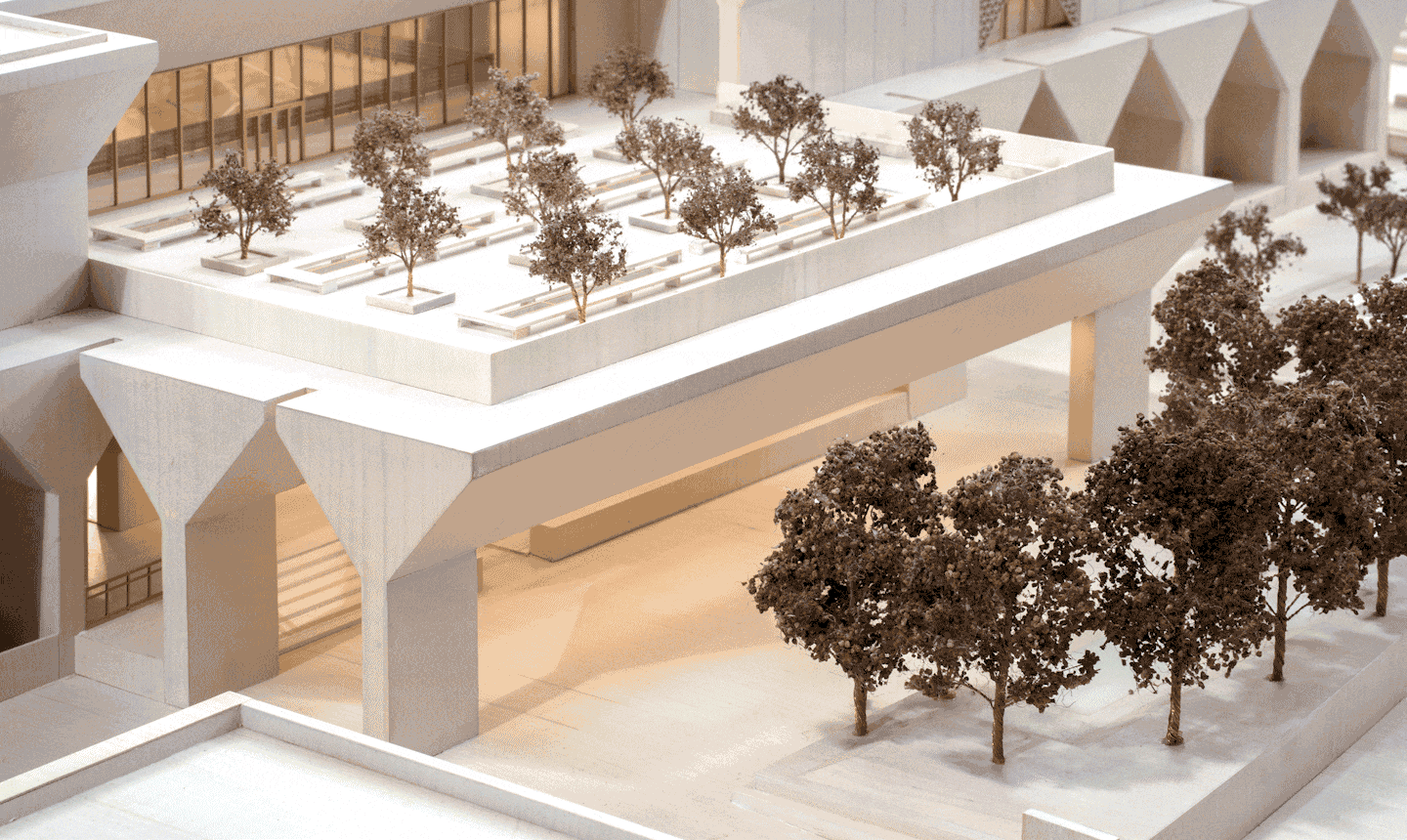Adjaye Associates with the Kiran Nadar Museum of Art
May 20–November 26, 2023
The Venice Biennale
Campo de la Tana, 2169/f
30122 Venice
Italy
Kiran Nadar Museum of Art (KNMA) today presents an architectural model of its new building. Designed by renowned Ghanaian-British architect Sir David Adjaye in collaboration with S. Ghosh & Associates as local architect of record, it is set to be India’s largest cultural centre when it opens in Delhi in 2026.
An installation showcasing the model is presented as part of the Curator’s Special Projects at the 18th International Venice Architecture Biennale, curated by Lesley Lokko and coincides with the breaking ground of the new museum in New Delhi.
It responds to “Mnemonic,” the theme of Curator’s Special Projects’ section in the Arsenale and includes works from the museum’s collection by major Indian artists Tyeb Mehta (1925–2009), Zarina (1937–2020) and Nasreen Mohamedi (1937–1990). This is accompanied by Touch AIR (2023), a film by contemporary filmmaker Amit Dutta.
KNMA was established in 2010 by one of India’s most well-known art collectors, Kiran Nadar, as a pioneering private museum exhibiting modern and contemporary works from India and the subcontinent. The museum’s collection of over 10,000 modern and contemporary works draws on the region’s rich cultural history. The new KNMA will host changing exhibitions, permanent displays, and performances as an international cultural destination for visual arts, music, dance, and theatre and enable far more of the collection to be seen at any one time.
The new location, covering over 100,000 square metres, will be located on the National Highway (NH8) in Delhi, near the Indira Gandhi International Airport.
Through image, text, architecture and film, KNMA’s installation in the Arsenale highlights the relationship between museum and memory, while specifically alluding to the Partition of India and Pakistan in 1947 and the subsequent rupture of a unified sense of place and being.
Belonging to the first generation of post-colonial artists in India, Tyeb Mehta often alluded to the unspoken pain and historical burden of Partition through a recurrent use of the diagonal line. The installation shows three images from the KNMA collection: Untitled (Woman on Rickshaw), 1994; Mahishasura, 1994 and Kali, 1997.
Zarina is an artist known for her geometric abstraction in prints and sculptures as well as text-based work that reflect on home, memory and displacement. Zarina began life in India and made homes in Japan, Thailand and America. Displacement and a lack of belonging characterised her life and are reflected in the poetic texts within the installation.
Contemporary filmmaker Amit Dutta draws on the personal writing and unique singular vision of Nasreen Mohamedi, an artist who was inspired by architectural forms and practised a frugal form of monochrome abstraction using only lines and working in graphite and ink on paper.
Kiran Nadar, Founder and Chairperson of KNMA: “Our Venice display spans subcontinental history and brings to the fore how the newly built space of KNMA will be a place for cultural discovery and diverse conversations. At the heart of KNMA is the notion of giving back to society, preserving treasures of the cultural past and nurturing a young generation of creative practitioners and thinkers, while bridging the gap between art and the public.”
Architect, Sir David Adjaye: “KNMA provides an opportunity to embolden the rise of contemporary Indian art, releasing a new cultural offering for both the people of India, as well as for the wider global arts landscape. Its location in Delhi–one of the oldest cities in the world with a lineage of habitation that stretches to the 6th century BCE–gives new context to its position as a dynamic, living cultural force, and has directly influenced the design of the new building.”
KNMA acknowledges the Tyeb Mehta Foundation, Imran Chishti from Zarina’s family, the Estate of Nasreen Mohamedi and Deepak Talwar for their co-operation and support.



